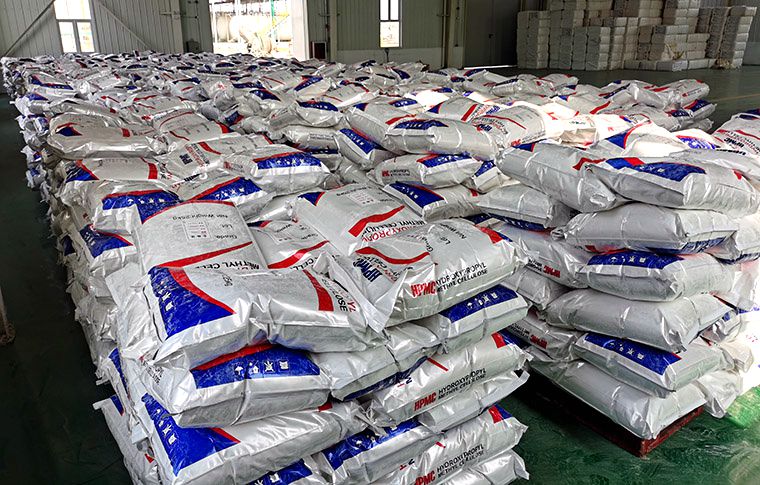
Hydroxypropyl methylcellulose(HPMC)
1. Take the required amount of hot water into the container and heat to above 85., stir slowly and add the product gradually The cellulose initially floats on the water, but gradually disperses in water and forms homogeneous slurry. Goon stirring until it cools down and becomes clear
2. Another way is by heating the amount of 1/3 or 2/3 water to above 85℃, add the cellulose to obtain hot slurry, then add the remaining cold water and keep stirring, the mixture is obtained when the slurry cools to about 20 ℃
3. Cellulose's mesh is fine, and it 's in the presence of separate small particles in evenly stirred powder and can rapidly dissolve in water
4. Or add the cellulose slowly and evenly at room temperature and keep stirring until clear solution is obtained
Packaging, Storage and Transportation Considerations
The net weight of each barrel or bag(plastic coated PP woven bag lined with polyethylene film or card-board inside the bag sealing plastic bags. ) 25.0kg. Please prevent from the sun and rain and moisture during storage and transport.
Main Uses
This product is industrial grade HPMC, mainly used as the dispersing agent for PVC production and as the main assistant used in producing PVC suspension polymerization, It is also used as thickener, stabilizer, emulsifier, excipient, water retention agent, and film-forming agent etc. in producing petrochemicals, building materials, paint removers, agricultural chemicals, inks, textiles, ceramics, paper. cosmetics and other products. In terms of the application in synthetic resin, it can make the products loose with regular particles, appropriate apparent gravity and good processing properties, which almost replaces gelatin and polyvinyl alcohol as dispersant. Another use is in the construction process industries, mainly for mechanized construction like building walls, stuccoing and caulking: with high adhesive strength, it can also reduce cement dosage, especially in decorative construction for pasting tiles, marble and plastic trim. When used as a thickener in the coatings industry. it can make coating shining and delicate, prevent power from falling off, and improve leveling properties When used in wall plaster, gypsum paste, caulking gypsum, and waterproof putty, its water retention and bonding strength will be significantly improved. Moreover, t can also be used in areas like functional ceramics, metallurgy, seed coating agents, water-based inks, cosmetics, electronics, printing and dyeing, paper etc
